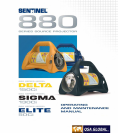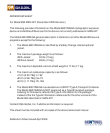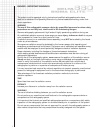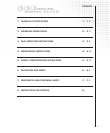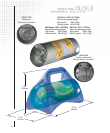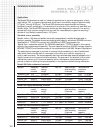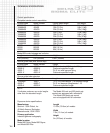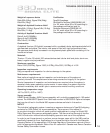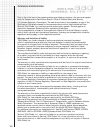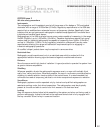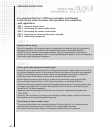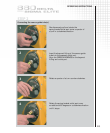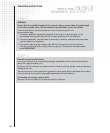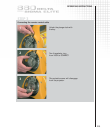
1.3
TECHNICAL SPECIFICATIONS
Source output
At 1m per Ci (37GBq) At 1ft per Ci (37GBq)
Ytterbium-169 0.125R/hr 1.25mSv/hr 1.3R/hr/Ci 13.0mSv/hr
Selenium-75 0.203R/hr 2.03mSv/hr 2.2R/hr/Ci 22.0mSv/hr
Iridium-192 0.48R/hr 4.80mSv/hr 5.2R/hr/Ci 52.0mSv/hr
Cobalt-60 1.30R/hr 13.0mSv/hr 14.0R/hr/Ci 140mSv/hr
Selected attenuation data
Material Approximate Approximate half value thickness
material inches(mm)
density Ytterbium-169 Selenium-75 Iridium-192 Cobalt-60
Concrete 2.35g/cm
3
1.140 (29.0) 1.180 (30.0) 1.700 (43.2) 2.400 (61.0)
Aluminum 2.65g/cm
3
– 1.100 (27.0) – –
Steel 7.80g/cm
3
0.170 (4.3) 0.315 (8.0) 0.512 (13.0) 0.827 (21.0)
Lead 11.34g/cm
3
0.032 (0.8) 0.039 (1.0) 0.200 (5.1) 0.500 (12.7)
Tungsten 17.80g/cm
3
– 0.032 (0.8) 0.130 (3.3) 0.310 (7.9)
DU 18.70g/cm
3
– – 0.050 (1.3) 0.270 (6.8)
Operating distance
The distance between the remote control and the exposure head is determined by summing
the length of the remote control conduits plus the total length of source guide tubes used,
and normally should not exceed 47ft (14.2m).
Standard remote controls:
25ft (7.6m), 35ft (10.7m), 50ft (15m).
Standard source guide tubes (projection sheaths):
7ft (2.1m) set of three source guide tubes: 21ft total (6.3m).
NOTE
The total length of source guide tubes utilized must be shorter in length than the remote
controls to ensure the source assembly will project into the working position.
e.g. When using 25ft (7.6m) remote controls, a maximum of three
7ft (2.1m) source guide tubes can be used with a combined length of 21ft (6.4m).
Conversely, when using 35ft (10.7m) remote controls, a maximum of four
7ft (2.1m) source guide tubes can be utilized.
When using 50ft (15m) remote controls, a maximum of six 7ft (2.1m) source guide
tubes can be utilized. This limitation is due to the weight and friction of remote control
cable length.



